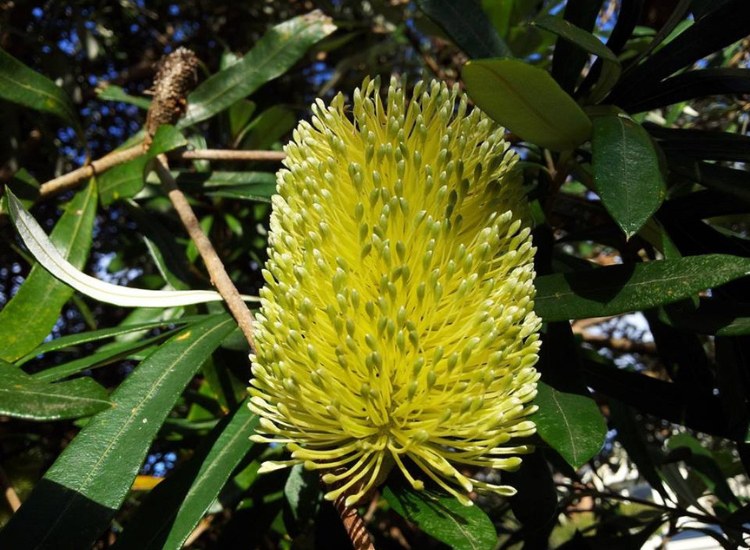View native plants of North Sydney chart
Biological diversity, or biodiversity, is the variety of all species on earth. It is the different plants, animals and micro-organisms, their genes, and the terrestrial, marine and freshwater ecosystems of which they are a part.
Much of North Sydney’s biodiversity is conserved in our bushland reserves, which mostly occur as narrow fragments around the harbour foreshores.
Prior to European settlement, diverse bushland habitats covered the gullies and ridgetops of North Sydney. Today, less than 5% of these unique vegetation communities remain, and due to our human-modified landscape, all are vulnerable to ongoing urban pressures.
Council's overarching Bushland Plan of Management and reserve-specific Bushland Rehabilitation Plans seek to address these issues and aim to build ecological resilience.
In 2010, Council engaged specialist ecologists to undertake a Natural Area Survey of North Sydney’s remnant bushland reserves. This baseline ecological study defined 12 separate native vegetation communities, supporting over 347 native plant species and just under 200 native wildlife species.
Here are each of the 12 vegetation communities that were defined, including all plant species that were recorded in these communities in 2010.
- Allocasuarina Scrub
Open-scrub dominated by Allocasuarina Iittoralis (Black She-oak). The distribution is restricted to two sites in Tunks Park, where it occurs on steep slopes on Hawkesbury Sandstone. - Angophora Foreshore Forest
Open-forest, occasionally tall open-forest, in which the dominant tree species is Angophora costata (Sydney Red Gum). This vegetation community is found both along the harbour foreshores and up to 1km away. - Blackbutt Gully Forest
Open-forest or tall open-forest, in which the dominant tree species is Eucalyptus pilularis (Blackbutt). It occurs in Wollstonecraft, Cremorne and Cammeray. - Disclimax Sandstone Scrub
Is open to closed scrub, or a forest of mixed and variable composition. A 'disclimax' community is an altered community that has replaced the original vegetation community as a result of disturbance. Disclimax Sandstone Scrub develops in sites where the original eucalypt forest vegetation has been subject to clearing or dieback. - Estuarine Mangrove Forest
Is a low closed-forest of Avicennia marina (Grey Mangrove) growing on intertidal mudflats. In North Sydney its distribution is restricted to Core Cove Reserve where it grows on the intertidal mudflats at the mouth of Berry Creek. - Estuarine Saltmarsh
Herbland of Sarvovorinia quinqueflora (Samphire) and Suaeda australis (Seablite), growing on intertidal mudflats. The introduced species, Atriplex prostrata (Orache), is a co-dominant. The distribution of this vegetation community is restricted to Gore Cove Reserve and it is listed as an endangered ecological community in NSW. - Estuarine Swamp Oak Forest
Open-forest dominated by Casuarina glauca (Swamp Oak), growing adjacent to the intertidal zone. This vegetation community is listed as an endangered ecological community in NSW and occurs in Wollstonecraft and Cammeray. - Forest Red Gum Foreshore Forest
Open-forest in which the dominant tree species is Eucalyptus tereticornis (Forest Red Gum). This vegetation community is a rare and unusual type of Turpentine-Ironbark Forest. It is listed as endangered under NSW and Commonwealth legislation. In North Sydney it only occurs on one site at Badangi Reserve on the sides and across the top of a small peninsula in Balls Head Bay. - Kunzea Scrub
Open-scrub dominated by Kunzea ambigua (Tick Bush), growing on top of harbour headlands with extensive flat sandstone outcrops. It occurs in Wollstonecraft and Waverton. - Mixed Sandstone Gully Forest
Open-forest of mixed tree composition. Distribution is restricted to Wonga Road Reserve and Tobruk Avenue Lookout, occurring on a steep slope beside Willoughby Bay. - Sandstone Foreshore Scrub
Open-scrub or closed-scrub growing on steep sandstone slopes adjacent to the harbour, with extensive sandstone outcrops and cliffs. It is similar to Disclimax Sandstone Scrub, but appears to be a natural community. This vegetation community occurs in Wollstonecraft, Waverton and Cremorne Point. - Sandstone Gallery Rainforest
Closed-forest dominated by Acmena smithii (Lilly Pilly), Ceratopetalum apetalum (Coachwood) and Pittosporum undulatum (Pittosporum), in various combinations. This vegetation community occurs on steep, sheltered slopes besides rock creeklines on Hawkesbury Sandstone in Wollstonecraft and Cremorne.


